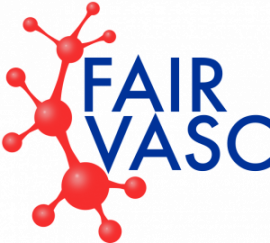Within FAIRVASC there are dedicated work packages (WPs) to communicate the FAIRVASC concept, progress and results of the project with target audiences including academia, industry, rare disease patients and patient advocacy organisations (PAOs), policy makers and the public. WP6 (Communication and Training) aims to communicate the concept and progress of FAIRVASC to key target audiences throughout the duration of the project and to deliver a three-day training event for researchers in other rare diseases, at which they can explore the use of FAIRVASC in their own contexts. The FAIRVASC website has been created and is being maintained by our communication team (led by Jagiellonian University Krakow). This team facilitates the notification of project progress and news items of interest, supported by specialists and researchers in the FAIRVASC consortium. Towards the end of the project, researchers from across ERN-RITA will participate in a three-day training event or ‘hackathon’ at which FAIRVASC processes and technologies will be deployed and demonstrated in the federation of registries of other rare immune diseases. WP6 will also provide training materials for other rare disease research communities, to enable them to benefit from access to FAIRVASC technologies.
WP7 (Dissemination and the Future) is led by the General University Hospital in Prague who oversees dissemination of the results of the FAIRVASC project to our key target audiences. Results will be disseminated by publications in high impact international peer-reviewed journals and magasines and presentations at workshops and conferences, targeting both industry and research. Our project scientific reports (Deliverables) will be openly available via the project website. Long-term sustainability of the FAIRVASC facility will be ensured in several ways. The FAIRVASC technology will be published open source, with documentation, on GitHub. Research access to vasculitis registries using the FAIRVASC facility will be managed in the longer term by the EUVAS Registries Subgroup and the project team are already discussing possibilities of adding new vasculitis registries across Europe and beyond once FAIRVASC concludes. Currently PAO representatives together with our data management specialists i~HD are actively involved in planning patient engagement workshops, crucial to stimulate awareness and interest among patients and individuals outside FAIRVASC.
The Communication and Dissemination team in FAIRVASC work together to provide a window for our target audiences to explore current project activities and view project outputs as they are developed. These aspects are of key importance to ensure the sustainability of the FAIRVASC facility into the future.
